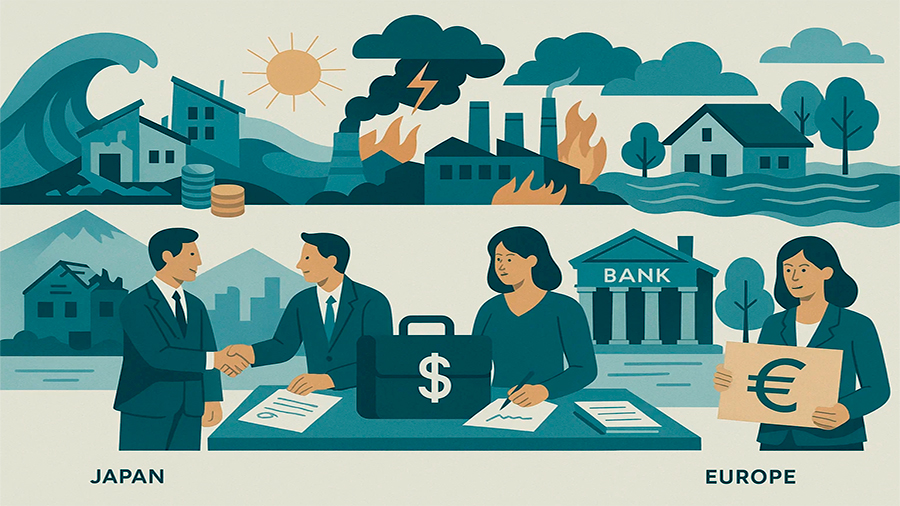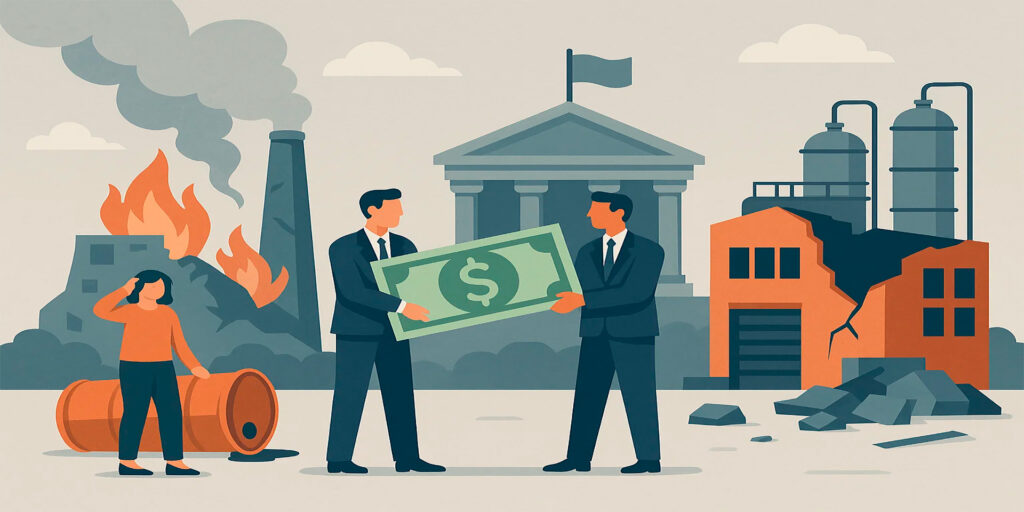Government-Backed Loans for Industrial Disaster Recovery
Industrial disasters strike fast and leave deep scars. Explosions, chemical leaks, fires, or natural hazards that damage factories and plants can halt production, cut jobs, and ripple across entire communities. When insurance payouts are delayed or insufficient, companies often need immediate liquidity to rebuild. This is where government-backed loans step in. They provide critical financing with reduced risk, allowing businesses to restart operations while protecting local economies from long-term collapse. Understanding how these loans work explains why they have become a central tool in industrial disaster recovery worldwide.
Why Recovery Financing Matters
Industrial facilities are often the backbone of regional economies. A single steel mill, refinery, or food processing plant can employ thousands directly and support many more through suppliers and service providers. When disaster strikes, the sudden loss of production leaves workers without paychecks and towns without tax revenue. Private lenders may hesitate to step in quickly, fearing high risk and uncertain repayment. Government-backed loans change this equation. By guaranteeing repayment or subsidizing rates, governments encourage lending that otherwise would not occur. This ensures capital flows into damaged industries at the moment when speed is most important.
How Government-Backed Loans Work
The principle is straightforward: governments provide a guarantee that reduces the lender’s risk. Banks or financial institutions extend credit to companies affected by disasters, knowing the government will cover losses if borrowers default. In some cases, governments issue the loans directly through development banks. The terms are often softer than commercial credit—longer repayment periods, lower interest rates, and grace periods before the first installment. These conditions give companies breathing space to rebuild facilities, restore supply chains, and restart payroll. In practice, the public guarantee turns hesitant lenders into willing partners during recovery.
Benefits for Companies and Communities
For businesses, access to government-backed loans means survival. Funds can be used to repair equipment, rebuild facilities, or secure replacement inventory. Without this financing, many companies would close permanently, especially if disaster insurance only covers a fraction of costs. For communities, keeping industries alive prevents economic collapse. Jobs return faster, suppliers keep contracts, and tax revenue supports schools and infrastructure. In some cases, these loans even improve resilience by encouraging investment in safer, greener, and more modern equipment during the rebuilding process. The benefit extends far beyond the company—it stabilizes entire regions.

Challenges and Criticisms
Despite their importance, government-backed loans are not a perfect solution. Critics argue that funds can be misused if oversight is weak. Some companies may rebuild inefficient facilities rather than modernize, wasting public resources. Others may default despite guarantees, shifting the cost to taxpayers. There are also risks of favoritism, where politically connected firms receive better terms. Transparency and accountability are crucial to ensure that loans serve recovery rather than corporate bailouts. Another challenge is speed: if loan approval processes are too slow, companies may already have laid off workers or lost market share before funds arrive. Balancing urgency with accountability remains one of the hardest tasks in disaster finance.
Global Examples of Recovery Programs
Countries around the world have used government-backed loans to respond to industrial disasters. In Japan, after the 2011 earthquake and tsunami, special credit facilities supported manufacturers whose factories were destroyed or disrupted by power shortages. In the United States, the Small Business Administration has long offered disaster loans with federal guarantees, helping companies rebuild after hurricanes, floods, and industrial accidents. In Europe, regional banks backed by state funds provided financing to firms hit by catastrophic floods in Germany and Central Europe. These cases show that while models vary, the underlying principle remains the same: governments absorb risk so that industries can recover quickly.
Mini Case Study: SBA Disaster Loans After Hurricane Katrina
When Hurricane Katrina struck the Gulf Coast in 2005, thousands of industrial facilities, warehouses, and small manufacturers were left underwater—literally and financially. Insurance payouts took months, and many businesses lacked the reserves to wait. The U.S. Small Business Administration stepped in with federally guaranteed disaster loans. These loans offered low interest rates and long repayment terms, giving companies the resources to replace equipment, rebuild facilities, and cover payroll. For example, small seafood processors in Louisiana used these loans to restore cold storage facilities vital to their trade. Without them, many would have gone bankrupt, erasing jobs and supply chains tied to the regional economy. The Katrina experience underscored the power of government-backed loans to keep industries alive even after catastrophic shocks.

Mini Case Study: Japan’s Fukushima Recovery Loans
The 2011 earthquake and tsunami in Japan not only caused physical devastation but also triggered the Fukushima nuclear disaster, which disrupted industries across the region. Many manufacturers lost plants to flooding or were forced to shut down due to power shortages and contamination fears. To stabilize the industrial base, the Japanese government worked through financial institutions to extend special disaster recovery loans. These loans provided long repayment periods and priority access for companies critical to local employment. Electronics firms, automotive suppliers, and chemical manufacturers used the funds to rebuild facilities and restore supply chains. Importantly, the program also encouraged companies to invest in safer, more energy-efficient systems during reconstruction. This case highlighted how government-backed loans can drive both recovery and modernization after disasters with long-lasting effects.
The Long-Term Impact
Government-backed loans do more than patch immediate damage. They shape the way industries prepare for the future. Firms that rebuild with public support often adopt stricter safety standards, invest in digital monitoring, or relocate to safer sites. Communities benefit from faster job recovery, but also from stronger infrastructure funded indirectly by renewed tax revenues. However, the long-term value depends on execution. If programs simply restore the status quo, vulnerability remains. If they are paired with resilience measures, loans can turn disasters into opportunities for structural improvement. This dual role—supporting immediate recovery and encouraging modernization—makes them a unique tool in industrial policy.
Conclusion
Industrial disasters cannot be avoided entirely, but their economic damage can be managed. Government-backed loans provide the bridge between devastation and recovery, ensuring companies have the funds to rebuild and communities retain their economic lifeline. While risks of misuse exist, the benefits for stability, employment, and resilience are undeniable when programs are designed well. As industries face growing threats from climate change and technological failures, these loans will likely become even more important. They are not just financial tools—they are strategic investments in keeping economies alive after crisis.

